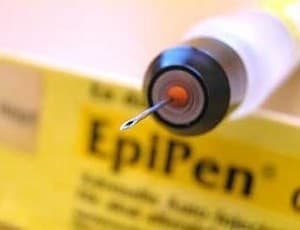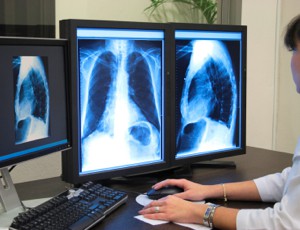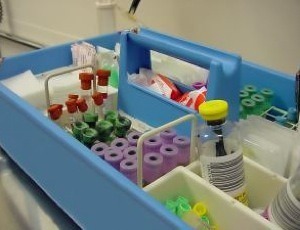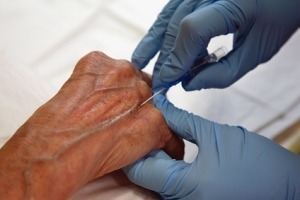Ultrasonography for the placement of long-term venous catheters in infants

The objective is to analyze our experience in ultrasound-guided implantation of reservoir type and tunneled catheters, as well as to compare it between both age groups” Reyes Ríos et al (2016). Abstract: OBJETIVES: The implantation of long duration intravenous catheters in pediatric population constitutes a challenge due to the size of vascular structures. Because of […]
Review of parenteral nutrition and intestinal failure

Chronic IF may be reversible, depending on anatomy and intestinal adaptation, but most patients require long-term nutritional support, generally in the form of parenteral nutrition” Bielawska and Allard (2017). Abstract: Severe short bowel syndrome (SBS) is a major cause of chronic (Type 3) intestinal failure (IF) where structural and functional changes contribute to malabsorption and […]
What is the optimal autoinjector needle length for use in infants

Our data suggest that the optimal EAI needle length for infants and toddlers weighing 7.5 to 15 kg should be shorter than the needle length in currently available pediatric EAIs to avoid accidental intraosseous injections” Kim et al (2017). Abstract: BACKGROUND: Epinephrine injection represents the standard of care for anaphylaxis treatment. It is most effective […]
Randomized controlled trial of care bundles with chlorhexidine and advanced IV dressings

To compare the effects of the care bundles including chlorhexidine dressing and advanced dressings on the catheter-related bloodstream infection (CRBSI) rates in pediatric hematology-oncology patients with central venous catheters (CVCs). Abstract: PURPOSE: To compare the effects of the care bundles including chlorhexidine dressing and advanced dressings on the catheter-related bloodstream infection (CRBSI) rates in pediatric hematology-oncology […]
Relationship between anatomical IV site and risk of infusion phlebitis
To explore the relationship between the anatomical site of peripheral venous catheterization and risk of catheter-related phlebitis” Comparcini et al (2017). Abstract: AIM: To explore the relationship between the anatomical site of peripheral venous catheterization and risk of catheter-related phlebitis. BACKGROUND: Peripheral venous catheterization is frequently associated with phlebitis. Recent guidelines, recommend the use of […]
Femoral central venous catheters in autologous peripheral blood stem cell collection

Autologous peripheral blood hematopoietic progenitor cell collection (A-HPCC) in children typically requires placement of a central venous catheter (CVC) for venous access. There is scant published data regarding the performance and safety of femoral CVCs in pediatric A-HPCC” Cooling et al (2017). Abstract: INTRODUCTION: Autologous peripheral blood hematopoietic progenitor cell collection (A-HPCC) in children typically […]
A case of persistent left superior vena cava and partial left inferior vena cava

The coexistence of a double superior vena cava (SVC) and a partially left inferior vena cava (PLIVC) with a circumaortic collar, associated with other congenital malformations, was not described previously” Ricciardi et al (2017). Abstract: BACKGROUND: The coexistence of a double superior vena cava (SVC) and a partially left inferior vena cava (PLIVC) with a […]
Efficacy of antimicrobial CVC impregnation in reducing catheter-related infections

In this network meta-analysis, we aimed to assess the comparative efficacy of antimicrobial CVC impregnations in reducing catheter-related infections in adults” Chong et al (2017). Abstract: BACKGROUND: The efficacy of antimicrobial central venous catheters (CVCs) remains questionable. In this network meta-analysis, we aimed to assess the comparative efficacy of antimicrobial CVC impregnations in reducing catheter-related […]
Global device-associated infection prevention practices reviewed

Numerous evidence-based practices for preventing device-associated infections are available, yet the extent to which these practices are regularly used in acute care hospitals across different countries has not been compared, to our knowledge” Krein et al (2017). Abstract: BACKGROUND: Numerous evidence-based practices for preventing device-associated infections are available, yet the extent to which these practices […]
Prevalence of healthcare-associated infections and antimicrobial use in Singapore

We conducted a national point prevalence survey (PPS) to determine the prevalence of healthcare-associated infections (HAIs) and antimicrobial use (AMU) in Singapore acute-care hospitals” Cai et al (2017). Abstract: BACKGROUND: We conducted a national point prevalence survey (PPS) to determine the prevalence of healthcare-associated infections (HAIs) and antimicrobial use (AMU) in Singapore acute-care hospitals. METHODS: […]
Consequences of CVC misplacement from the right subclavian vein to the left

This is a case report of a 21-year-old male with a rare incident of CVC misplacement from the right subclavian vein to the left” Gleesborg et al (2017). Abstract: Central venous catheter (CVC) is useful for prolonged intravenous treatment, but not without risk. This is a case report of a 21-year-old male with a rare […]
Improving Bisphosphonate infusion monitoring in the medical day unit

The aim of this quality improvement project was (1) to avoid preventable bisphosphonate induced adverse effects, (2) to improve safety of bisphosphonate prescribing and administration and (3) to increase patient’s awareness of needing regular dental checks” Ong and Jones (2017). Abstract: This project was started after an incident of bisphosphonate-induced hypocalcaemia in September 2015. As […]
How to prevent phlebotomy blood sample rejection?

There is an increasing amount of blood sample rejection at primary health care facilities (PHCFs), impacting negatively the staff, facility, patient and laboratory costs” Abbas et al (2017). Abstract: BACKGROUND: There is an increasing amount of blood sample rejection at primary health care facilities (PHCFs), impacting negatively the staff, facility, patient and laboratory costs. [ctt […]
What is the effect of medical clowns on distress levels associated with venipuncture in children?

In this pilot study, medical clowns reduced the distress from venipuncture in children. No effect on cortisol levels was observed” Rimon et al (2016). Abstract: BACKGROUND: Medical clowns are increasingly used for diminishing pain and anxiety during painful procedures being performed on children in the hospital setting. Cortisol levels rise as a response to emotional […]
Will repeated venipuncture increase risk for anaemia?
Anemia is a potential adverse effect of phlebotomy during participation in research. Clinical studies of acute HIV infection (AHI) require frequent phlebotomy to maximize scientific yield, but this participant population may also be at increased risk for anemia and other adverse events” Sacdalan et al (2017). Abstract: INTRODUCTION: Anemia is a potential adverse effect of […]
Continuous closed circle television to monitor hand hygiene compliance

In the present study, we compare continuous closed circle television (CCTV) with overt observation for monitoring the hand hygiene compliance of health care workers (HCWs) in a general intensive care unit (GICU)” Brotfain et al (2017). Abstract: Introduction: A variety of hand hygiene monitoring programs (HHMPs) have come into use in hospitals throughout the world. […]
Resuscitation technical skill evaluation tool includes intraosseous needle insertion

To develop a reliable and validated tool to evaluate technical resuscitation skills in a pediatric simulation setting” Faudeux et al (2017). Abstract: OBJECTIVES: To develop a reliable and validated tool to evaluate technical resuscitation skills in a pediatric simulation setting. [ctt link=”OdWfX” template=”1″]ReTweet if useful… Resuscitation technical skill evaluation tool includes intraosseous needle insertion https://ctt.ec/OdWfX+ […]
Effectiveness of PICC for intravenous calcium supplements after parathyroidectomy
PICC is a safe and efficient alternative in contrast to CVC for providing venous access for calcium supplementation in surgical patients after parathyroidectomy” Qi et al (2017). Abstract: BACKGROUND: Intravenous calcium supplements are often required following parathyroidectomy to avoid postoperative hypocalcaemia. The aim of this study was to compare application effect of a femoral central […]
Effectiveness of HAI bundles reviewed in this article

The use of standardized care bundles is evidence-based; however, implementation of these bundles has not proven effective in eliminating HAIs” Bogue and Bogue (2017). Abstract: Today’s health care environment emphasizes patient outcomes, although financial incentives and penalties have placed a high priority on elimination of health care-associated infections (HAIs). The use of standardized care bundles […]
How effective is OPAT treatment of osteomyelitis with telavancin

These data demonstrate the effective and safe OPAT use of telavancin, providing an alternative for successful treatment of patients with osteomyelitis” Schroeder et al (2017). Abstract: Telavancin is a lipoglycopeptide antibiotic with bactericidal activity against Gram-positive pathogens including Staphylococcus aureus, the most frequent cause of osteomyelitis. Treatment is often challenging due to needs for surgical […]
Using chlorhexidine skin disinfectant in extremely preterm infants

Using 0.2% CHG-acetate as skin disinfectant in extremely preterm infants resulted in statistically significant reduction of skin lesions, without increasing the risk of CLABSI as compared with 0.5% CHG-70% alc” Janssen et al (2017). Abstract: OBJECTIVE: The skin disinfectant ‘0.5% chlorhexidine gluconate in 70% alcohol’ (0.5% CHG-70% alc) may cause skin lesions in extremely preterm […]
PICC-related-thrombosis during induction chemotherapy in acute lymphocytic leukemia children
To investigate the current status of catheter-related-thrombosis (CRT) and the risk factors of Chinese acute lymphocytic leukemia (ALL) children with peripherally inserted central catheter (PICC)” Wei et al (2017). Abstract: Objective: To investigate the current status of catheter-related-thrombosis (CRT) and the risk factors of Chinese acute lymphocytic leukemia (ALL) children with peripherally inserted central catheter […]
Complication rates of 3% hypertonic saline infusion through peripheral IV access devices

Although central venous infusion may reduce the risk of these minor complications, it may increase the risk of more serious complications such as large vessel thrombosis, bloodstream infection, pneumothorax, and arterial injury. The concern regarding the risks of pIV administration of 3% HTS may be overstated and unfounded” Perez and Figueroa (2017). Abstract: INTRODUCTION: Hyperosmolar […]
Reducing central venous catheter use in apheresis
This quality improvement project demonstrated that a successful apheresis procedure can be achieved easily and safely in the majority of PBSC donors preventing the potential adverse events associated with CVCs. The interdisciplinary collaboration between the IV team, apheresis and clinical hematology teams was paramount to optimize the safe care of donors” Ghazi et al (2017). […]
Ultrasound guidance for central venous access in children
This article aims to review the literature and evaluate the benefit of US guidance in the placement of CVCs, specifically in pediatric emergency department patients, and to review the procedure” He et al (2017). Abstract: BACKGROUND: Placement of a central venous catheter (CVC) in a pediatric patient is an important skill for pediatric emergency medicine […]
Impact of Taurolidine/Citrate locks for primary prevention of catheter-related infections

The ATAPAC study was a prospective, randomized, monocentric, phase IV trial evaluating the efficacy of taurolidine lock solution versus standard saline solution for primary TIVAP-RI prevention in nonhematological cancer patients receiving i.v. chemotherapy” Longo et al (2017). Abstract: BACKGROUND: Totally implantable venous access port (TIVAP)-related infections (RIs) remain a serious health problem in cancer patients […]
Mechanical complications of central venous catheterisation in a developing world setting
The aim of our study was to determine the spectrum of mechanical complications in a high-volume trauma centre in a developing world setting where ultrasound guidance was not available” Odendaal et al (2017). Abstract: INTRODUCTION: Central venous catheterisation (CVC) is a commonly performed procedure in a wide variety of hospital settings and is associated with […]
What is the incidence of chlorhexidine resistance genes

Dressings containing chlorhexidine gluconate (CHG) are increasingly used in clinical environments for prevention of infection at central venous catheter insertion sites. Increased tolerance to this biocide in staphylococci is primarily associated with the presence of qacA/B and smr genes” Choudhury et al (2017). Abstract: PURPOSE: Dressings containing chlorhexidine gluconate (CHG) are increasingly used in clinical […]
Seroconversion rates among health care workers exposed to hepatitis C virus

This study provides the largest and most recent cohort from a major U.S. academic medical center. The seroconversion rates among HCP exposed to HCV-contaminated body fluids was found to be lower than most of the data found in the literature” Egro et al (2017). Abstract: BACKGROUND: Hepatitis C virus (HCV) transmission to health care personnel […]
What are the differences between open and closed intravenous cannulae

This article explains the differences between open cannulae and closed cannulae. It reviews the current use of open cannulae and the risks of blood exposure and how these can be reduced. The benefits of using closed cannulae are also described” Jane Shaw (2017). Abstract: Undertaking peripheral intravenous (IV) cannulations and the management of cannulae are […]

